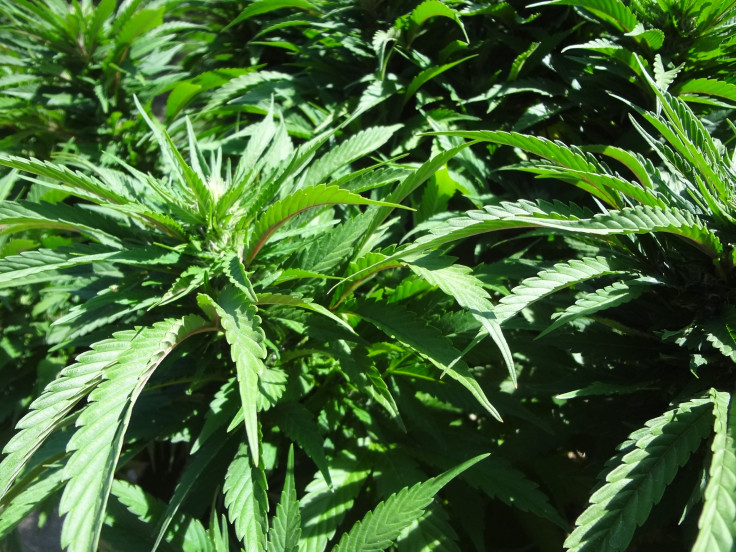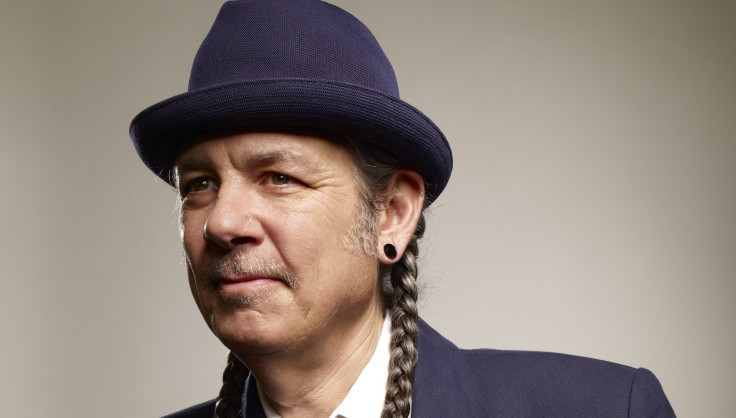California Marijuana Legalization 2016: With 10 Legalization Efforts Afoot In The Golden State, Which Is Most Likely To Pass?

In California's race to legitimize recreational marijuana, at least 10 legalization initiatives are vying to appear on the state’s November 2016 ballot. The political pileup could lead to none of the initiatives scoring enough votes to win, or it could result in the opposite conundrum: more than one legalization effort passing, something that Keith Humphreys, a Stanford professor who co-chaired a recent California Blue Ribbon Commission on Marijuana Policy, predicts could become “an ungodly mess.”
On Monday, advocates filed the ninth legalization initiative with California’s attorney general: The Adult Use of Marijuana Act, an effort reportedly being bankrolled by tech billionaire Sean Parker that has scored powerful endorsements from national marijuana groups and California Lt. Gov. Gavin Newsom. The idea is to unify the various statewide legalization camps behind this major effort, but it’s unclear whether everyone will agree to the approach -- especially since a tenth competing initiative was filed Tuesday. Now activists around the state are weighing the pros and cons of the various measures, trying to determine which has the best shot of reaching the electoral finish line.
This wouldn’t be the first time Californians have weighed in on the issue. In 2010, Proposition 19 would have made the state the first in the country to legalize marijuana, but voters defeated the measure by a 53.5-46.5 margin. Now that four other states -- Colorado, Washington, Oregon and Alaska -- have gone on to legalize cannabis, many suspect California is ready to do likewise. In July, the Blue Ribbon Commission on Marijuana Policy, which is led by Newsom, laid out a roadmap for what an ideal legal marijuana framework might look like, and many see new statewide medical marijuana regulations as tacit legislative acknowledgement that California may soon regulate non-medical marijuana use, too.
If California does legalize non-medical marijuana use next year, the political and financial spoils would be hefty. California is the cultural and economic nucleus of the country’s cannabis scene. It was the first state to legalize medical marijuana by passing Proposition 215 in 1996, and its numerous marijuana farms are estimated to produce 60 percent to 70 percent of all marijuana consumed in the country. What’s more, legalization there would launch a cannabis market in what is the world’s eighth-largest economy.
“California is the jewel in the crown if you favor marijuana legalization,” says Humphreys. “Politically, it is such a game changer. It is such a massive state, and such a wealthy state, that when it comes to legalization, there would be no going back. Everyone wants credit for flipping California.”

That’s why more than a year before the election, the campaign landscape is already a crowded field, with 10 groups comprised of lawyers, activists and medical marijuana business owners having filed initiatives to legalize marijuana next year. (That’s not counting several initiatives that seek to tweak the state’s medical marijuana laws.)
The various legalization efforts could be emboldened by the fact that this election season the bar is low to get initiatives in front of voters. To place a statute on the ballot in California, petitioners must collect signatures equaling at least 5 percent of the most recent gubernatorial vote. Since turnout for the state’s last gubernatorial race was unusually small, petitioners only need 365,880 valid signatures to get on the 2016 ballot, the fewest number of signatures required in decades.
Still, the time and funding required to collect even 365,880 signatures before the state’s Feb. 4 deadline is considerable. It’s why some people believe at least some of the proposed initiatives were submitted simply as model legalization language, and that their backers won’t go through with collecting signatures. That would explain why several sponsors of legalization initiatives filed earlier this year also show up among the sponsor names of more recently filed initiatives.
It’s possible that the Adult Use of Marijuana Act, filed Monday, has the clout to unite the assorted groups. For while environmental attorney Michael Sutton and physician Donald Lyman might be listed as the initiative’s official proponents, a consortium of powerful interests have also thrown their support behind the measure. Along with alleged financial support from Parker, founder of Napster and an early investor in Facebook, the initiative has been backed by the Marijuana Policy Project and the Drug Policy Alliance, major national marijuana organizations. Further, Newsom issued a statement Monday supporting the initiative.
“I am pleased that this thoughtful measure is aligned with the Blue Ribbon Commission's recommendations, and presents California its best opportunity to improve the status quo by making marijuana difficult for kids to access,” he said.
But then again, many people hoped the various legalization efforts would come together to support a initiative filed last month by the California Coalition for Cannabis Policy Reform, or ReformCA, an alliance of California marijuana proponents that includes several of the proponents behind Proposition 19 in 2010. “We are doing everything we can to have a unity campaign,” Dale Gieringer, director of California NORML, a member of the ReformCA coalition, said at the time. “We are certainly doing everything we can to ensure there is one initiative. I do think an agreement is likely.”
However, instead of fostering unity, support for ReformCA seems to have fractured; before the initiative was filed, the Drug Policy Alliance and the Marijuana Policy Project were removed from the organization’s official list of sponsors.
Divisions are already forming over the recently filed Adult Use of Marijuana Act. On Tuesday, Steve DeAngelo, executive director of Harborside Health Center, California's largest marijuana dispensary, announced in a statement that instead of supporting this measure, he's backing the Cannabis Control and Taxation Act, filed Tuesday by Sacramento attorney George Mull. According to the statement, DeAngelo believes Mull's initiative will be “much shorter and easily understood, firmly closes the door to Big Tobacco and Big Alcohol, and mandates more appropriate penalties for cannabis infractions.”

Thanks to the upheaval, more than one legalization initiative could appear on next year’s ballot – and it’s conceivable that multiple measures could pass. If that happens, the measure that receives the most votes will go into effect – along with, possibly, provisions of any other legalization measure that passed that aren’t in conflict with the winning measure. The matter would likely end up in court.
Bruce Margolin, a attorney who’s the director of the Los Angeles chapter of NORML, is more concerned about the opposite outcome: “You could end up with less than 50 percent voting for any of them, because they will split the vote.” That’s why in July, Margolin’s law firm compiled a detailed comparison of the five main legalization initiatives that had since been filed. “I wanted to create a forum to discuss the issue in hopes that a miracle can happen and everyone can join together under one umbrella,” says Margolin.
Based in part on his firm’s analysis, here’s a breakdown of all 10 initiatives:
2016 California Marijuana Legalization Initiatives
A comparison of the various proposed marijuana ballot issues
| Initiative Title and Sponsors | Taxation and Use of Revenue | Communities Allowed to Ban Marijuana Businesses? | Business Rules | Personal Possession Limits | Legal Relief For Previous Marijuana Convictions? |
|---|---|---|---|---|---|
| The Adult Use of Marijuana Act (Michael Sutton and Donald Lyman) | 15% excise tax on retail sales. Revenues would be used to investigate legalization outcomes, develop marijuana DUI protocols, support communities harmed by past drug policies, sponsor marijuana research and fund various social programs. | Yes | Recreational licenses would only be granted to California residents, with existing medical marijuana businesses receiving priority. Delivery services would be permitted and local governments could allow marijuana consumption at marijuana shops. Rules would be established for appellations of origin and organic labels. | Up to 1 ounce of marijuana, 4 grams of marijuana concentrates and six marijuana plants. | Yes |
| Cannabis Control and Taxation Act (George Mull, California Cannabis Association) | 5% excise tax on retail sales. Revenues would go to marijuana research, state preschool programs, environmental protection and cleanup programs and pediatric medical research. | No | Recreational licenses would only be granted to California residents. Those associated with alcohol and tobacco companies could not receive licenses. | Up to six marijuana plants and up to 1 ounce of marijuana and 4 grams of marijuana concentrates on a highway or in a public space. | Not specified |
| The Control, Regulate and Tax Cannabis Act of 2016 (ReformCA) | 15% retail tax on edibles and concentrates; 10% tax on all other marijuana products. Revenues would go to local governments and various statewide social, safety, environmental and research initiatives. | Yes | Marijuana would be regulated similarly to alcohol. Recreational licenses would only be granted to California residents, with existing medical marijuana businesses receiving priority. | Up to 1 ounce of marijuana and 100 square feet of garden space. | Yes |
| The 2016 California Bipartisan Decriminalization of Cannabis Act (Jason and Lara Collinsworth, founders of Love Genetics) | 15% excise tax, plus 5% implementation tax. Half of all revenues would go to public schools. | Yes | Medical dispensaries would become recreational shops on Jan. 1, 2017. Concentrates made with dangerous solvents and delivery services would be prohibited. | Up to 5 pounds of dried marijuana, 1 pound of extracts, 3 gallons of liquid extracts and 500 square feet of garden space. | Yes |
| The Safe Communities, Parks and Schools Act of 2016 (SaferCA, founded by Chad and Marinda Hanes) | Purchases would be taxed at 50 cents per gram of dry product, $3.30 per gallon of liquid-infused products and $2 per gram of concentrate. Revenues would be distributed to drug abuse programs, public land funds and medical marijuana research. | No | Existing medical marijuana businesses would not face penalties until recreational licenses are issued. Delivery services would be permitted. | Up to 30 grams of dried marijuana and either six mature plants or 25 square feet of garden space, whichever is greater. | Yes |
| The California Cannabis Hemp Initiative (Berton Duzy) | Excise taxes would not exceed 10% of the retail price. Half of all revenues would fund development of hemp businesses. | No | Operators would be regulated similarly to alcohol businesses and would follow health and safety rules established for the herbal products industry. | Up to 12 pounds of dried marijuana and 99 flowering female plants. | Yes |
| The California Craft Cannabis Initiative (Heather Burke and Omar Figueroa) | Total taxes would not exceed 30% of a product’s retail value. | No | California residents and dispensaries operating for at least a year could operate in the recreational market. Rules would be established for trademarks, appellations, craft cultivator licenses and organic labels. | Up to six marijuana plants. | Not specified |
| The Marijuana Control, Legalization and Revenue Act of 2016 (Americans for Policy Reform) | Excise taxes would not exceed 15% of a product’s retail value. Revenues would go to education, conservation, drug abuse programs, public safety, marijuana research, minority organizations and local government general funds. | Yes | California residents and medical marijuana businesses operating for at least a year would have priority for commercial cultivation licenses. Rules would be established for appellations, artisan cultivator licenses and organic labels. | Personal cultivation limits could be set by local neighborhood standards. | Not specified |
| Community Act to Regulate, Control and Tax Cannabis of 2016 (Alice Huffman, president of the California NAACP) | 10% cannabis tax. | No | Delivery services would be permitted. | Up to 1 ounce of marijuana and 25 square feet of garden space. | Not specified |
| The Cannabis Legalization Act of 2016 (Sam Clauder, California Cannabis Unity Campaign) | Revenues would go to education, substance abuse programs and marijuana research. | No | In the absence of local regulations, marijuana consumption by those 21 and older would conform to tobacco regulations. | Not specified | Not specified |
© Copyright IBTimes 2024. All rights reserved.






















